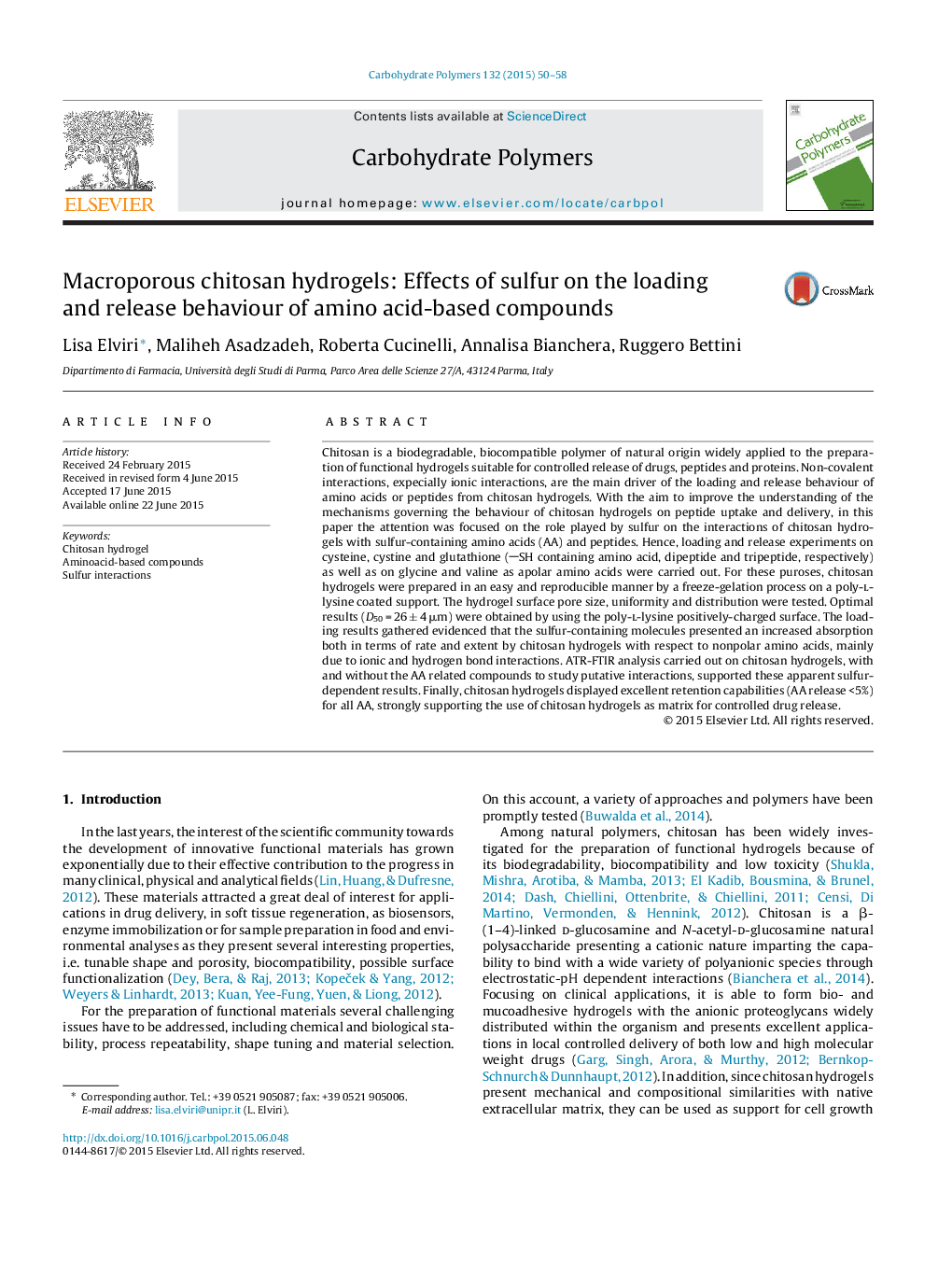| Article ID | Journal | Published Year | Pages | File Type |
|---|---|---|---|---|
| 7787426 | Carbohydrate Polymers | 2015 | 9 Pages |
Abstract
Chitosan is a biodegradable, biocompatible polymer of natural origin widely applied to the preparation of functional hydrogels suitable for controlled release of drugs, peptides and proteins. Non-covalent interactions, expecially ionic interactions, are the main driver of the loading and release behaviour of amino acids or peptides from chitosan hydrogels. With the aim to improve the understanding of the mechanisms governing the behaviour of chitosan hydrogels on peptide uptake and delivery, in this paper the attention was focused on the role played by sulfur on the interactions of chitosan hydrogels with sulfur-containing amino acids (AA) and peptides. Hence, loading and release experiments on cysteine, cystine and glutathione (SH containing amino acid, dipeptide and tripeptide, respectively) as well as on glycine and valine as apolar amino acids were carried out. For these puroses, chitosan hydrogels were prepared in an easy and reproducible manner by a freeze-gelation process on a poly-l-lysine coated support. The hydrogel surface pore size, uniformity and distribution were tested. Optimal results (D50 = 26 ± 4 μm) were obtained by using the poly-l-lysine positively-charged surface. The loading results gathered evidenced that the sulfur-containing molecules presented an increased absorption both in terms of rate and extent by chitosan hydrogels with respect to nonpolar amino acids, mainly due to ionic and hydrogen bond interactions. ATR-FTIR analysis carried out on chitosan hydrogels, with and without the AA related compounds to study putative interactions, supported these apparent sulfur-dependent results. Finally, chitosan hydrogels displayed excellent retention capabilities (AA release <5%) for all AA, strongly supporting the use of chitosan hydrogels as matrix for controlled drug release.
Keywords
Related Topics
Physical Sciences and Engineering
Chemistry
Organic Chemistry
Authors
Lisa Elviri, Maliheh Asadzadeh, Roberta Cucinelli, Annalisa Bianchera, Ruggero Bettini,
